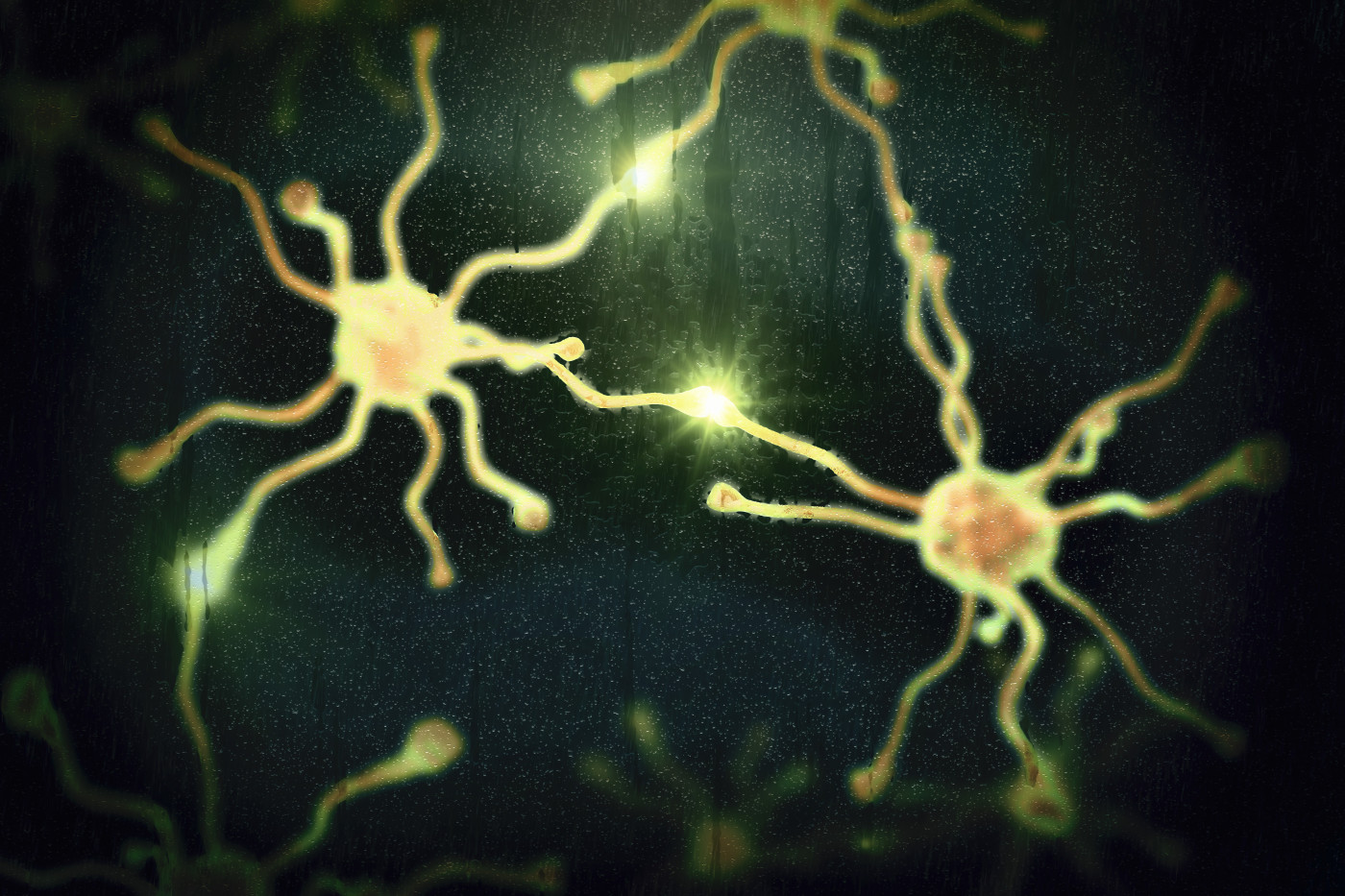Increasing the Activity of Certain Type of Nerve Cell Restores Cognition, Mouse Study Shows
Written by |

The brain works in a coordinated matter, like a tuned orchestra, scientists say.
If a single instrument is out of sync, it affects the entire ensemble. In Alzheimer’s disease, damage to certain nerve cells is sufficient to alter brainwave rhythms and cause a loss of cognitive function.
A new mouse study shows how enhancing the activity of inhibitory interneurons — nerve cells that work like orchestra conductors — can help rescue out-of-sync brain rhythms and restore cognitive function in Alzheimer’s.
The study, “Nav1.1-Overexpressing Interneuron Transplants Restore Brain Rhythms and Cognition in a Mouse Model of Alzheimer’s Disease,” was published in the journal Neuron.
Inhibitory interneurons are special types of nerve cells that control brain rhythms. These cells instruct other nerve cells — called excitatory neurons — on when to be active and when to stop.
Scientists have discovered alterations in interneurons and their orchestrated rhythms in Alzheimer’s and in conditions like epilepsy, schizophrenia, and autism.
Researchers had previously discovered that inhibitory interneuron malfunctioning in mouse models of Alzheimer’s underlay two key symptoms of the disease: impaired memory and epileptic activity.
Gladstone Institutes scientists have found that a nerve cell protein called Nav1.1 contributes to brain disharmony. The team engineered inhibitory interneurons to generate more of the protein, then transplanted the tweaked interneurons into mice with Alzheimer’s. They did the same with regular interneurons.
“We took advantage of the fact that transplanted interneurons can integrate remarkably well into new brain tissues, and that each interneuron can control thousands of excitatory neurons,” Jorge Palop, PhD, an assistant investigator at the Gladstone Institutes, said in a press release.
“These properties make interneurons a promising therapeutic target for cognitive disorders associated with brain rhythm abnormalities and epileptic activity,” added Palop, a co-lead author of the study who is also an assistant professor of neurology at the University of California, San Francisco.
While transplanting regular interneurons failed to help the mice, interneurons that triggered over-production of the protein restored mice’s brain rhythms and reversed their behavioral problems.
“These optimized neurons are like master conductors,” Palop said. “Even with a declining orchestra, they can restore the rhythms and harmony needed for cognitive functions.”
The findings suggested that interneuron transplants could help patients with Alzheimer’s and other disorders.
“Besides the applications this cell engineering and transplantation approach may find in regenerative medicine, our findings support the broader concept that enhancing the function of interneurons can counteract key aspects of Alzheimer’s disease,” said Dr. Lennart Mucke, director of the Gladstone Institute of Neurological Disease.
Palop’s team is investigating whether the cell therapy can be translated from mice to humans. They are also trying to identify drugs that have the potential to enhance inhibitory interneurons’ functioning.
“Advancing our understanding of Alzheimer’s disease and identifying potential new treatment strategies are critical to addressing the escalating global health crisis,” said Elizabeth Edgerly, executive director of the Alzheimer’s Association’s Northern California and Northern Nevada chapter.





